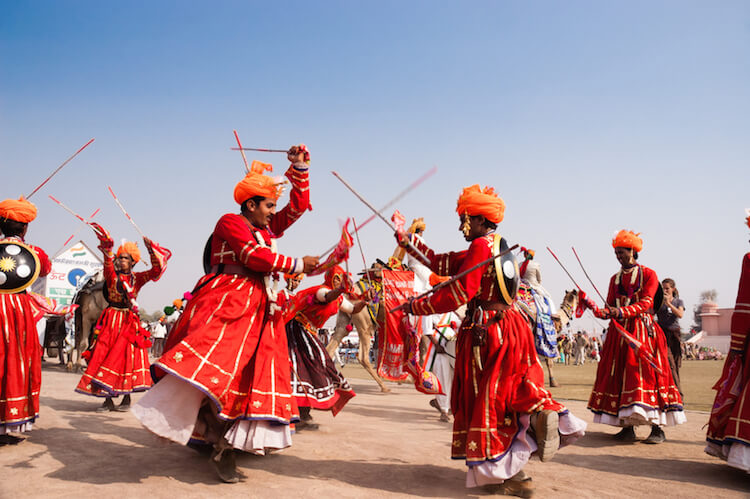Madhya Pradesh Tribes : Discover the Rich Culture
Madhya Pradesh, located in the heart of India, is home to a rich and diverse tapestry of tribal communities. Madhya Pradesh Tribes have their own distinct cultures, languages, traditions, and ways of life. Here are some of the prominent tribal communities in Madhya Pradesh:
Gond Tribe: The Largest Of Madhya Pradesh Tribes
The Gonds are one of the largest and most well-known tribal communities in Madhya Pradesh. They primarily inhabit the central and eastern regions of the state. The Gonds have a rich tradition of art and music, with their famous Gond paintings gaining international recognition.
The Gonds have their own language called “Gondi,” which is part of the Dravidian language family.Gondi is primarily spoken among Gond communities, helping to preserve their distinct cultural identity.While some Gonds have adopted other regional languages, Gondi remains an integral part of their heritage.
Historically, Gonds have been primarily dependent on agriculture, cultivating crops like rice, millet, and pulses. In some areas, they practise shifting cultivation, known as “jhum” or “slash-and-burn” agriculture. Apart from farming, Gonds often engage in activities like animal husbandry, fishing, and gathering forest produce.
The Gond people follow a syncretic blend of animism, nature worship, and Hinduism. Their religious practises involve the worship of village deities, spirits, and natural elements like trees and rocks. The Gotul system is a traditional Gond institution where young boys and girls are taught their customs, rituals, and moral values.
Many tourists visiting Madhya Pradesh have the opportunity to interact with Gond communities in areas like Bhopal, Pachmarhi, and Mandla. Gond villages often welcome visitors, offering insights into their way of life, art forms, and traditions. Tourists can purchase Gond handicrafts and paintings as souvenirs, supporting the tribal economy.
Bhil Tribe: Oldest Madhya Pradesh Tribal Community
The Bhil tribe is one of the significant indigenous communities in the state of Madhya Pradesh, India. They have a distinctive culture, history, and way of life that adds to the cultural diversity of the region. Here’s a short note on the Bhil tribes of Madhya Pradesh:

The Bhil tribe is one of the oldest tribal communities in India, with a history that can be traced back to ancient times. They have a strong presence not only in Madhya Pradesh but also in other states in central and western India.
Bhil communities are scattered throughout Madhya Pradesh, with concentrations in regions like the Vindhya and Satpura ranges, as well as the Narmada Valley. They have also settled in neighbouring states such as Gujarat, Rajasthan, and Maharashtra.
The Bhils have their own language known as “Bhili” or “Bhilodi.” While Bhili is their native language, many Bhils also speak regional languages like Hindi or Marathi.
Bhil culture is deeply rooted in their connection with nature and the forested areas they traditionally inhabit. They have a rich tradition of folk songs, dances, and oral storytelling, often accompanied by musical instruments like the “maandar.” Bhils are known for their traditional art forms, including vibrant paintings and intricate embroidery work.
The Bhil tribes of Madhya Pradesh have a rich cultural legacy deeply intertwined with their natural surroundings. Their art, music, and traditions reflect their close relationship with the environment, making them an integral part of the cultural mosaic of the state. Efforts to empower and uplift Bhil communities are essential for preserving their unique heritage and ensuring a better quality of life for their members.
Baiga Tribe:
The Baiga tribe resides mainly in the eastern parts of Madhya Pradesh, particularly in the districts of Mandla and Dindori. They are known for their deep knowledge of medicinal plants and traditional healing practises. The Baigas have a strong connection to nature and are often considered the “forest people” of Madhya Pradesh.
Korku Tribe:
The Korku tribe of Madhya Pradesh mainly inhabits the districts of Khandwa and Burhanpur. They have their own Korku language and follow a unique cultural heritage. Agriculture is a significant part of their livelihood, and they celebrate various festivals with great enthusiasm.
Saharia Tribe:
The Saharia tribe primarily resides in the Shivpuri and Gwalior districts of Madhya Pradesh. They are known for their resilience and adaptability to challenging environments. The Saharias have their own language and maintain their cultural identity through dance, music, and traditional ceremonies.
Bharia Tribe:
The Bharia tribe, found in the Hoshangabad and Betul districts, is known for its distinctive social structure and cultural practises. They have a rich oral tradition and are skilled in creating unique bamboo crafts.
Kolam Tribe:
The Kolam tribe resides in the eastern parts of Madhya Pradesh, particularly in the districts of Chhindwara and Seoni. They are known for their vibrant dance forms, which are an integral part of their festivals and celebrations.
These tribal communities have a deep connection with the land, nature, and their indigenous traditions. Many of them are known for their sustainable agricultural practises, traditional art forms, and a rich repository of knowledge about local flora and fauna. Visitors to Madhya Pradesh often have the opportunity to interact with these tribal communities, learn about their unique way of life, and appreciate their contributions to the cultural diversity of the state.
-
How many tribal communities are there in Madhya Pradesh?
Madhya Pradesh is home to over 46 distinct tribal communities, each with its own unique culture and traditions.
-
What is the significance of tribal art in Madhya Pradesh?
Tribal art in Madhya Pradesh serves as a cultural repository, reflecting the deep connection between indigenous communities and their natural surroundings.
-
Are there any tribal festivals in Madhya Pradesh that visitors can participate in?
Yes, visitors can join in the festivities of tribal festivals like the Bhagoria Festival and Dussehra, experiencing the vibrant culture firsthand.
